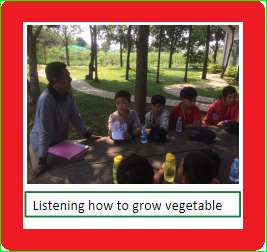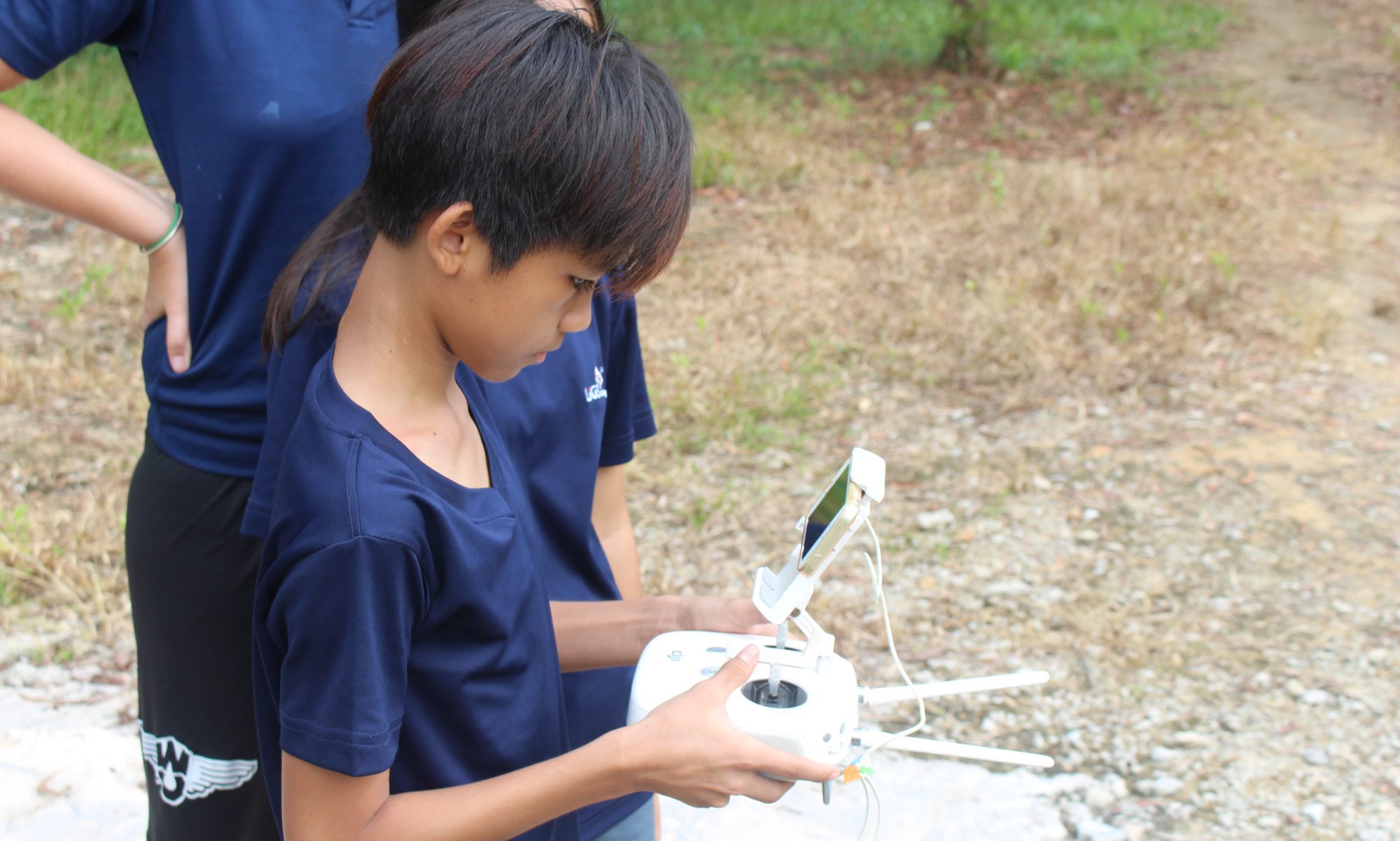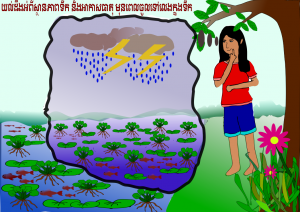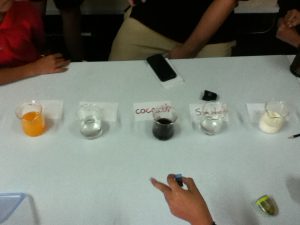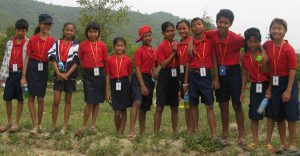- Exploration Name: Food Systems
- Exploration Dates: March 10 – May 2
- Number of Students: 15
A food system is the cyclical process of growing, transforming, packaging, transporting, cooking, eating, and recycling food. Sometimes we can skip some of these steps. For example if we eat a mango that grows from a tree at our house we are skipping packaging, transporting, cooking, and transforming. This is an example of a local food system. An example of a global food system is chips that have ingredients from different parts of the world and are packaged, transformed and transported all over the world.
In our class we learned the difference between all three kinds of soil. They are sand, silt and clay. We started to grow the seeds. The seeds have grew, but we have not taken its to grow in our raised beds yet. In one day we have to give the water to the plants 3 – 4 times. We learned the six steps to grow the seeds, from laying the toilet paper to moving them in the tray. We have learned the part of the seeds. There are seed coat, embryo and cotyledons. We learned about the fruits and vegetables. We also learned about global and local food systems. Global is the food that is all around the world. Local is the food that is near. Ex: If we are Cambodian and buy the food in Cambodia that food is the local because it is near where we live. Ex: If we are Cambodian and buy the food from Malaysia that food is the global because it is far away from where we live. Also, we learn about the pros and the cons about local and global food systems.
We took four trips to learn about Food Systems. The first trip we went on Organic farm. The owner shown us how to grow the seeds. In his farm there are ten different typesof seeds: lettuce, fruit plants and herbs. Also, he told us that insects and the weeds destroy his farm. Weeds are the things that you don’t want. EX: In the farm have the grass that grows, the weeds is the grass because the farmer doesn’t want that to grow in their farm. New technology is that they cover the soil by the plastic because when we put the compost and the water will not go away. Compost is made out of the animals poo mixed with soil and rice husks. The second trip we went to Natural garden store. In that shop sell vegetables, snacks, wine and ingredients. The owner had taught us how to find where the food came from. The owner said that some of his fruits, vegetable and cookies are bought from France, America, Thailand, North America, Singapore, Germany and local. He has own farm in Kampong Speu and at Kampong Som. The third trip we went to University Agriculture. In there we learned about hydroponics. The guide told us that hydroponic is the new technology in Cambodia. Hydroponics means growing on the water. At there we saw lots of lettuce that grows on the water. The last trip we went to Rice Mill. We learned about the different rice in Cambodia. Also, we learned the difference between brown rice and white rice and how both of this rice is good for us.
